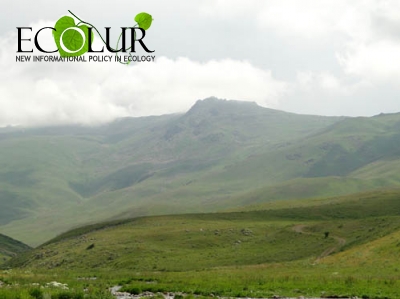

EcoLur
Specialists give professional assessment to Amulsar open pit mining project implemented by Lydian International Company in Armenia with the financial support of the European Bank for Reconstruction and Development, EBRD, and International Finance Corporation, IFC.
This time it’s Harutyun Movsisyan, PhD in Geological Sciences, Associate Professor, who submitted his assessment on the official website of Aarhus Centers, www.aarhus.am, which particularly says: “The EIA submitted by the company mentions heap leach facility with a capacity of 106 million tons and says nothing that this volume is wastes to be collected in the tailing dump, which needs technical conditions, special project, hazard category and a passport. It mentions only the area and nothing about fencing etc. The project excludes penetration of hazardous substances (note by EcoLur: gold extraction with cyanide) into environment and doesn’t plan to locate recording detectors below the protecting layer. Only these devices can fix any leak to take measures against.
The next problem is the seismic assessment of Amulsar project area.
The EIA mentions middle extent of seismic risks, while the section on a heap leach facility doesn’t mention seismicity at all. A question arises: how seismicity can be assessed, if the technical proposal on facility construction is missing and compliance with technical standards is missing. We speak about seismicity of 5-6 magnitude, which is underestimated assessment for this region. Amulsar is located in the seismic zone within the ranges of 0.2-0.3 g and higher, which can be interpreted as 8-9 magnitude seismicity.
The project mentions about the wastes and barren rock, which will be accumulated after open pit, but it forgets about the heap leach facility located in a distance of 1.2 km from Gndevaz Village and adsorption-desorption-recovery (ADR) plant. The sanitary zone is calculated in a distance of 1.5 km from the nearest house, which is incorrect. Sanitary zone is determined as 1 km from buffer zone, which separates residential area from the zone of business activities. Under the international standards, this distance is 2 km from the buffer zone, so the plant must be relocated in a distance of 3 km from the residential area.
Then what about rationality. Under the project, dead pits will be filled with barren rock. But the data show that at the depth of 50-100 meters ores are available, while according to RA Code on Subsoil, the development of the mine is permitted, if absence of further resources is proved. Nevertheless, the project doesn’t mention anything about expected resources of expansion, reclaiming plans and waste generation and disposal limits project, i.e. expected resources and balance are subject to state assessment.”
March 23, 2015 at 15:27
